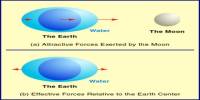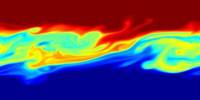Synchrotron radiation is a type of electromagnetic radiation produced when charged particles, mainly electrons, are accelerated in a circular route within a synchrotron facility. It is the electromagnetic radiation released when relativistically charged particles are subjected to an acceleration perpendicular to their velocity (a ⊥ v), also known as magnetobremsstrahlung radiation.
Synchrotrons are big, complicated machines that are employed in a variety of scientific domains, including physics, chemistry, biology, and materials science. It is created artificially in particle accelerators and naturally by rapid electrons passing through magnetic fields. The radiation created in this manner has a distinct polarization, and the frequencies produced can span a wide range of the electromagnetic spectrum.
Here are some key points about synchrotron radiation:
- Acceleration of Charged Particles: Using intense magnetic fields, charged particles, often electrons, are accelerated to near the speed of light in a synchrotron. These particles are designed to move along a circular path known as a storage ring, keeping them in a closed loop.
- Bending Magnets and Wigglers/Undulators: Magnetic fields cause acceleration and deflection of charged particles as they travel along a curved path. Synchrotron radiation is emitted as a result of the acceleration and deflection. Various devices, such as bending magnets, wigglers, and undulators, are employed to do this.
- Properties of Synchrotron Radiation: Synchrotron radiation is extremely powerful and spans the entire electromagnetic spectrum, from infrared to X-rays. It is also highly collimated, which means it travels in a nearly parallel beam, making it suitable for a wide range of applications.
Synchrotron radiation is similar to bremsstrahlung radiation, which is emitted by a charged particle when the acceleration is parallel to the direction of motion. The general term for radiation emitted by particles in a magnetic field is gyromagnetic radiation, for which synchrotron radiation is the ultra-relativistic special case. Radiation emitted by charged particles moving non-relativistically in a magnetic field is called cyclotron emission. For particles in the mildly relativistic range (≈85% of the speed of light), the emission is termed gyro-synchrotron radiation.
Synchrotron emission happens in astrophysics due to ultra-relativistic motion of a charged particle around a black hole, for example. Synchrotron radiation occurs for orbits near to the photosphere where the motion is in the ultra-relativistic regime when the source travels a circular geodesic around the black hole.
Applications
X-ray crystallography, spectroscopy, and imaging are just a few of the scientific and industrial applications for synchrotron radiation. Researchers can utilize synchrotron facilities to research the electrical properties of materials, analyze the structure of materials, proteins, and other compounds at the atomic and molecular levels, and undertake many forms of imaging, such as medical imaging and non-destructive testing of materials.
Advantages
The primary benefit of synchrotron radiation is its great brightness and variable energy. This enables the detailed examination of a wide range of materials and processes. It has become a vital instrument for scientific inquiry in a wide range of fields.
To summarize, synchrotron radiation is a significant instrument in scientific study because it produces intense and tunable electromagnetic radiation over a wide range of wavelengths. It has a wide range of applications and has played an important part in expanding our understanding of the natural world as well as many technological advancements.
















